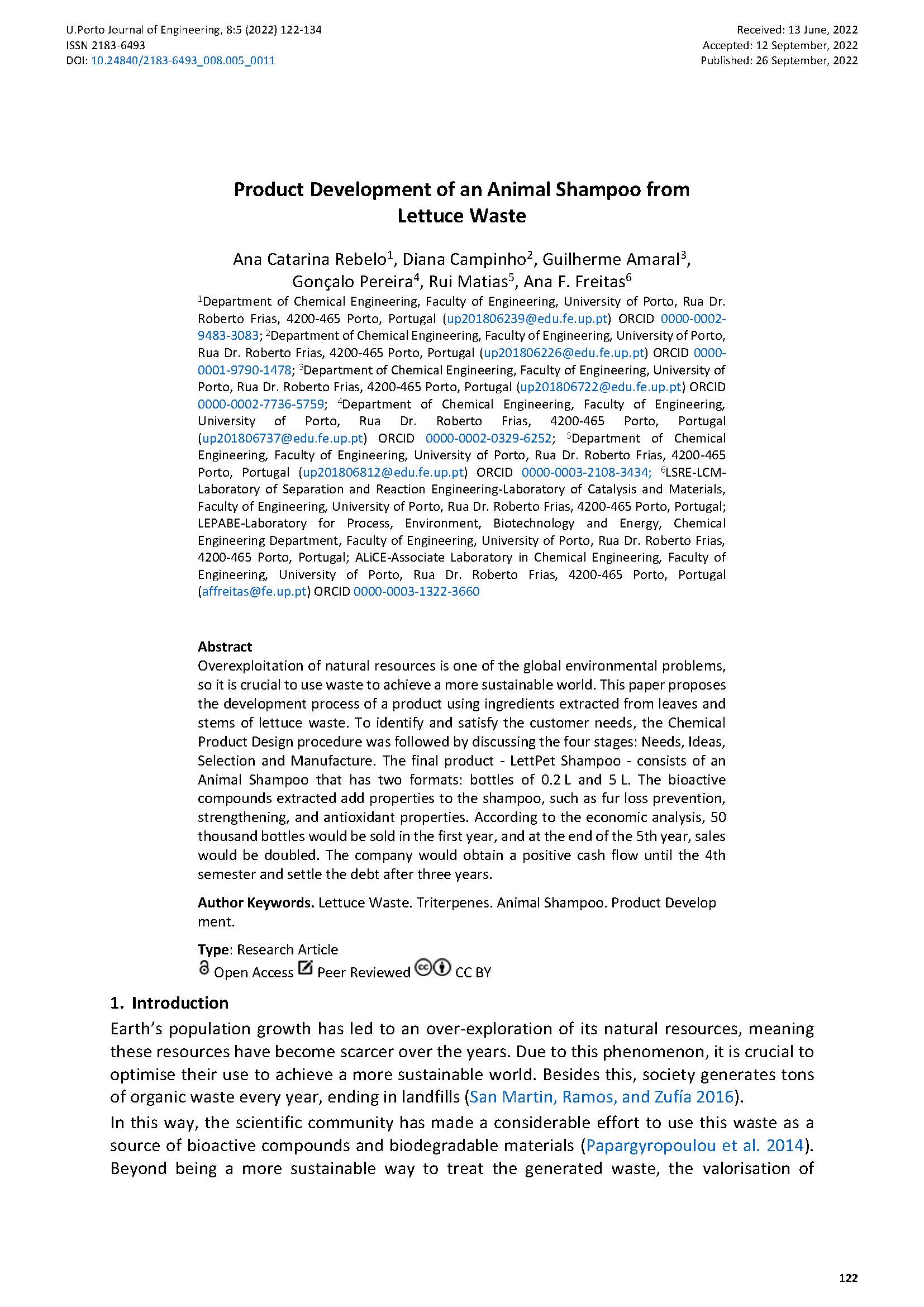Product Development of an Animal Shampoo from Lettuce Waste
Main Article Content
Abstract
Overexploitation of natural resources is one of the global environmental problems, so it is crucial to use waste to achieve a more sustainable world. This paper proposes the development process of a product using ingredients extracted from leaves and stems of lettuce waste. To identify and satisfy the customer needs, the Chemical Product Design procedure was followed by discussing the four stages: Needs, Ideas, Selection and Manufacture. The final product - LettPet Shampoo - consists of an Animal Shampoo that has two formats: bottles of 0.2 L and 5 L. The bioactive compounds extracted add properties to the shampoo, such as fur loss prevention, strengthening, and antioxidant properties. According to the economic analysis, 50 thousand bottles would be sold in the first year, and at the end of the 5th year, sales would be doubled. The company would obtain a positive cash flow until the 4th semester and settle the debt after three years.
Downloads
Article Details

This work is licensed under a Creative Commons Attribution 4.0 International License.
Authors who publish with this journal agree to the following terms:
- Authors retain copyright and grant the journal right of first publication with the work simultaneously licensed under a Creative Commons Attribution License that allows others to share the work with an acknowledgement of the work's authorship and initial publication in this journal.
- Authors grant the journal the rights to provide the article in all forms and media so the article can be used on the latest technology even after publication and ensure its long-term preservation.
- Authors are able to enter into separate, additional contractual arrangements for the non-exclusive distribution of the journal's published version of the work (e.g., post it to an institutional repository or publish it in a book), with an acknowledgement of its initial publication in this journal.
- Authors are permitted and encouraged to post their work online (e.g., in institutional repositories or on their website) prior to and during the submission process, as it can lead to productive exchanges, as well as earlier and greater citation of published work (See The Effect of Open Access).

